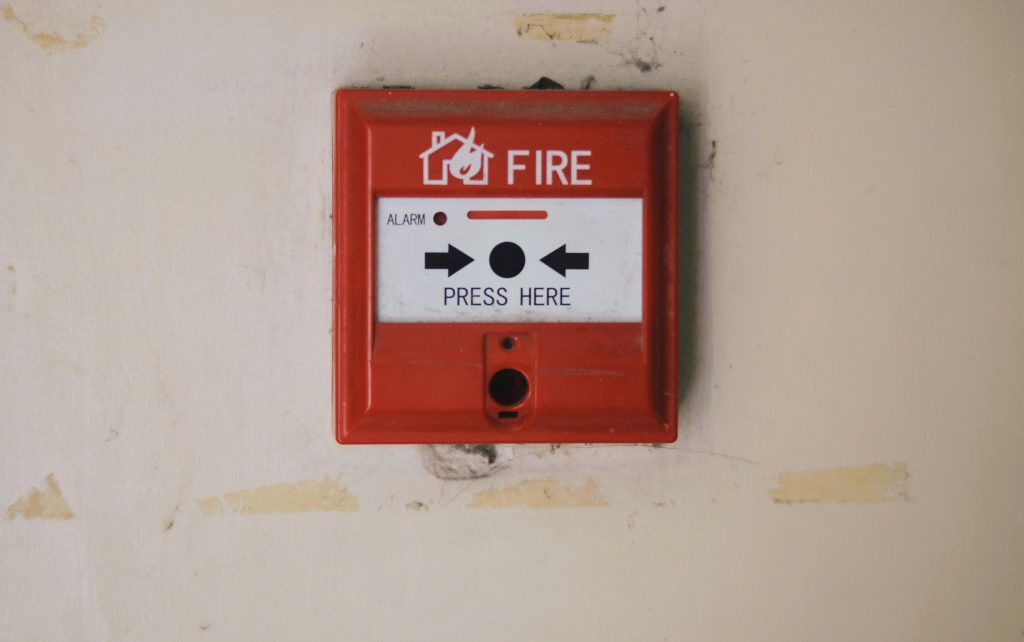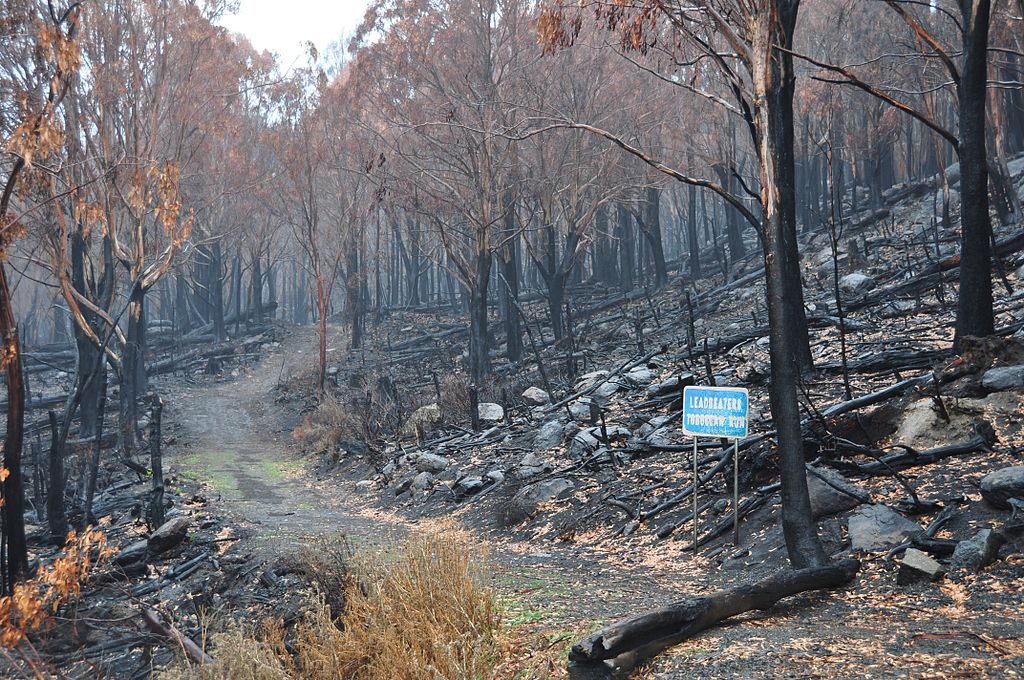Bushfires pose a growing threat to Australia’s economy and environment. Their frequency and intensity have escalated from the devastating Black Saturday fires in 2009 to the catastrophic Black Summer of 2019 –2020, resulting in soaring economic losses. Although experts predicted rising costs under climate change scenarios, recent fires have already outstripped even the most cautious estimates.
The 2014 Productivity Commission report underscores a fundamental challenge: governments tend to focus too heavily on post-disaster recovery while underfunding mitigation efforts that could reduce bushfire risks. As a result, financial liabilities are rising. When suppression teams arrive, the size of a fire determines how well it can be controlled. Consequently, faster detection and response can prevent small fires from becoming uncontrollable, saving lives and money.
This post examines why Australia’s economic burden from bushfires will likely exceed earlier projections. In addition, we introduce exci’s cutting-edge AI wildfire detection system, which identifies fires in their earliest stages. By enabling faster intervention, our solution prevents small fires from becoming devastating disasters, reducing environmental damage and economic costs.
The Black Summer Fires: A$100 Billion Wake-Up Call
During the 2019–2020 Black Summer fires, approximately 24 million hectares burned, over 3,000 homes were destroyed, and at least 33 lives were lost. In response, the Australian government pledged A$2 billion in emergency aid. However, experts like Professor John Quiggin from the University of Queensland argued in 2020 that the actual cost far exceeds these official figures.
The Treasury estimated that the fires reduced GDP by $4.6 billion, but economist Janine Dixon cautioned that “GDP does not tell the full story.” Indeed, conventional metrics like GDP can be misleading, as they treat recovery efforts – such as rebuilding and healthcare demand – as economic positives while ignoring the destruction and human suffering that necessitated them.
More comprehensive economic models reveal the full impact of disasters. These models account for firefighting costs, health impacts, displacement, asset losses, and long-term environmental damage. Additionally, they highlight secondary consequences, such as reduced tourism, weakened consumer confidence, and rising insurance premiums. Quiggin aptly summarised the challenge, calling the government’s A$2 billion aid package “a drop in the bucket” compared to the vast economic fallout.
Research from the University of Queensland, published in Environmental Research Letters in 2022, estimated the costs of restoring the fire-impacted native environment. Specifically, the researchers found that restoring the environmental damage from the Black Summer bushfires will require $16 billion annually. While this investment could restore 65% of affected species’ habitats, fully restoring 95% would cost a staggering $73 billion annually. This research indicates that even Professor Quiggin’s estimate of $100 billion falls short.
 Fire alarm by Nothing Ahead via pexels
Fire alarm by Nothing Ahead via pexels
Economic Drivers of Bushfires
Quiggin projected that the total economic impact of bushfires could exceed A$100 billion. To illustrate, below is a detailed look at the primary factors contributing to these staggering costs:
Agriculture
Bushfires devastate farmland, livestock, and fencing, significantly reducing agricultural output. Consequently, farmers bear the burden of replanting crops, rehabilitating soil, and replacing lost stock. During the Black Summer, agricultural losses totalled A$5 billion, with disrupted supply chains creating additional financial strain for months.
Insurance
The Insurance Council of Australia (ICA) reported $2.32 billion in insured losses from nearly 39,000 claims. Moreover, Quiggin estimated the broader economic impact of underinsured losses at A$5–10 billion.
 House destroyed in Hillville, NSW on 12 Nov 2019. Source: https://en.wikipedia.org/wiki/2019%E2%80%9320_Australian_bushfire_season by Raginginsanity
House destroyed in Hillville, NSW on 12 Nov 2019. Source: https://en.wikipedia.org/wiki/2019%E2%80%9320_Australian_bushfire_season by Raginginsanity
Infrastructure
Rebuilding roads, bridges, and essential utilities—including telecommunications and energy infrastructure—is expensive and time-consuming. Furthermore, stricter building codes to enhance resilience against future disasters require advanced materials, engineering solutions, and specialized labour, further increasing costs.
For example, telecommunications systems suffered as fires destroyed cell towers and fibre-optic cables, disrupting communication networks crucial to residents and emergency responders.
In addition, energy infrastructure sustained severe damage to powerlines and substations, leading to prolonged outages for businesses, hospitals, and essential services. Repair costs were high, with some of the financial burden passed to consumers via increased energy prices.
Tourism Losses
Popular destinations in New South Wales and Victoria saw significant revenue losses as tourists cancelled bookings en masse. Quiggin estimated that international tourism income dropped by A$20 billion. As a result, fire damage and concerns over future risks discouraged tourism, with some regions requiring years to recover.
Health
The health impacts of bushfire smoke were severe, increasing cases of respiratory and cardiovascular illnesses, contributing to premature deaths, and placing enormous pressure on healthcare systems. Consequently, health-related losses—including medical expenses and lost productivity—could amount to billions of dollars.
Environmental costs
Moreover, the destruction of natural ecosystems also had far-reaching consequences. Fires killed an estimated 480 million native animals, pushing some species to the brink of extinction. Conservation efforts spanning years were wiped out within weeks, leaving a lasting ecological impact.
Systemic Disruptions to Business Operations
Beyond direct losses, bushfires disrupted working conditions, forced office closures, and interrupted business operations across multiple sectors. Therefore, these systemic disruptions compounded the overall economic burden, adding hidden costs that are often difficult to quantify.
Quiggin’s projections align with findings from Deloitte Access Economics, which suggest that the combined tangible and intangible costs of bushfires could reach A$230 billion.
Climate Change Fuels Billion-Dollar Wildfires: A Grim Forecast
 Image by https://commons.wikimedia.org/wiki/File:2009_Lake_Mountain_after_bushfire_DSC_0335.JPG – Peter Campbell CC BY-SA 3.0
Image by https://commons.wikimedia.org/wiki/File:2009_Lake_Mountain_after_bushfire_DSC_0335.JPG – Peter Campbell CC BY-SA 3.0
Although the Black Summer fires of 2019–2020 were less deadly than the 2009 Black Saturday fires, they burned 25 times more land. Climate Criminologist Paul Read and adjunct Professor Richard Denniss argued that scaling Black Saturday’s economic impact to Black Summer’s magnitude yields an estimated cost of A$103 billion—closely aligning with Quiggin’s A$100 billion projection.
In comparison, the Black Saturday fires caused A$7–8 billion in tangible and intangible damages. This sharp rise in economic losses underscores how climate change accelerates the frequency and intensity of wildfires, leading to increasingly severe financial consequences.
 Image by Patrickgom0 via https://en.wikipedia.org/wiki/2019%E2%80%9320_Australian_bushfire_season#/media/File:2019-20_Australia_Bushfires_season_montage.png
Image by Patrickgom0 via https://en.wikipedia.org/wiki/2019%E2%80%9320_Australian_bushfire_season#/media/File:2019-20_Australia_Bushfires_season_montage.png
Economic Projects and the Case for Early Detection
exci (formerly Fireball.International) commissioned the Australian National University (ANU) to forecast the economic impact of bushfires from 2020 to 2049. ANU’s findings indicate that, under various climate scenarios, fire-related costs could reach A$2.2 billion annually. However, they warn that actual risks could exceed these projections, with fires on the scale of Black Summer potentially driving annual costs far beyond A$2.2 billion—emphasising the need to prepare for worst-case scenarios in a rapidly changing climate.
Notably, they also predicted that investments in early fire detection could reduce these costs by approximately A$14.4 billion over the same period.
The Pivotal Role of exci’s AI Wildfire Detection
exci’s AI-powered wildfire/bushfire detection technology is a critical investment, given the significant economic toll of large fires. Specifically, early intervention stops small fires from escalating into catastrophic events, reducing economic and environmental damage. Beyond financial benefits, early forest fire detection also safeguards public health, biodiversity, and vital infrastructure.
Research by ANU and Quiggin highlights that improving early detection lowers the risk of large, costly fires, potentially saving billions. This proactive approach is especially important since only 3% of Australia’s disaster relief funding goes toward mitigation, while 97% is spent on recovery. Thus, shifting resources to prevention is essential to reduce rising fire-related costs and protect communities.
The Australian Local Government Association (ALGA) emphasised that the social costs of natural disasters often match or surpass their economic impacts, affecting health, education, employment, and community networks over the long term. Indeed, research shows that prepared, resilient communities recover more effectively from disasters, with social capital playing a pivotal role in their recovery.
Conclusion: Choosing Prevention Over Recovery
The Black Summer fires are a stark reminder that bushfire costs are escalating faster than anticipated. Economists like John Quiggin and Paul Read warn that Australia faces unprecedented financial losses without decisive action. As climate change drives more frequent and severe wildfires, the gap between projected and actual costs will widen.
Investing in innovative technologies, such as exci’s AI-powered forest fire detection system, is essential for mitigating the economic impact of future fires. More importantly, preventing small forest fires from escalating into catastrophic events safeguards what truly matters: people’s lives, their dreams and memories, our ecosystems, and critical infrastructure.
by Gabrielle Tylor
exci – Smoke Alarm for the Bush
AI Wildfire & Bushfire Detection Technology
Don’t let Hazardous Events become Catastrophic!
exci has evolved from delivering AI-powered wildfire detection to offering a complete turnkey solution. By expanding our services, exci offers a One-Stop Solution for comprehensive bushfire detection, management, and network connectivity. Proudly Australian-made and owned, we provide a complete package that includes:
- AI-driven detection system for fast, accurate and reliable early wildfire detection
- Real-time camera access and control allow immediate situational awareness and informed decision-making during wildfire events.
- Expertly designed and installed hardware for seamless fire monitoring
- Custom tower solutions tailored to your specific location and needs
- Complete expert installation and maintenance services
Secure your assets, enhance your fire response capabilities, and experience peace of mind with exci’s AI forest fire detection and monitoring service.
Contact us today to discover how we can tailor our AI-powered wildfire/bushfire detection and network solutions to suit your unique needs.

